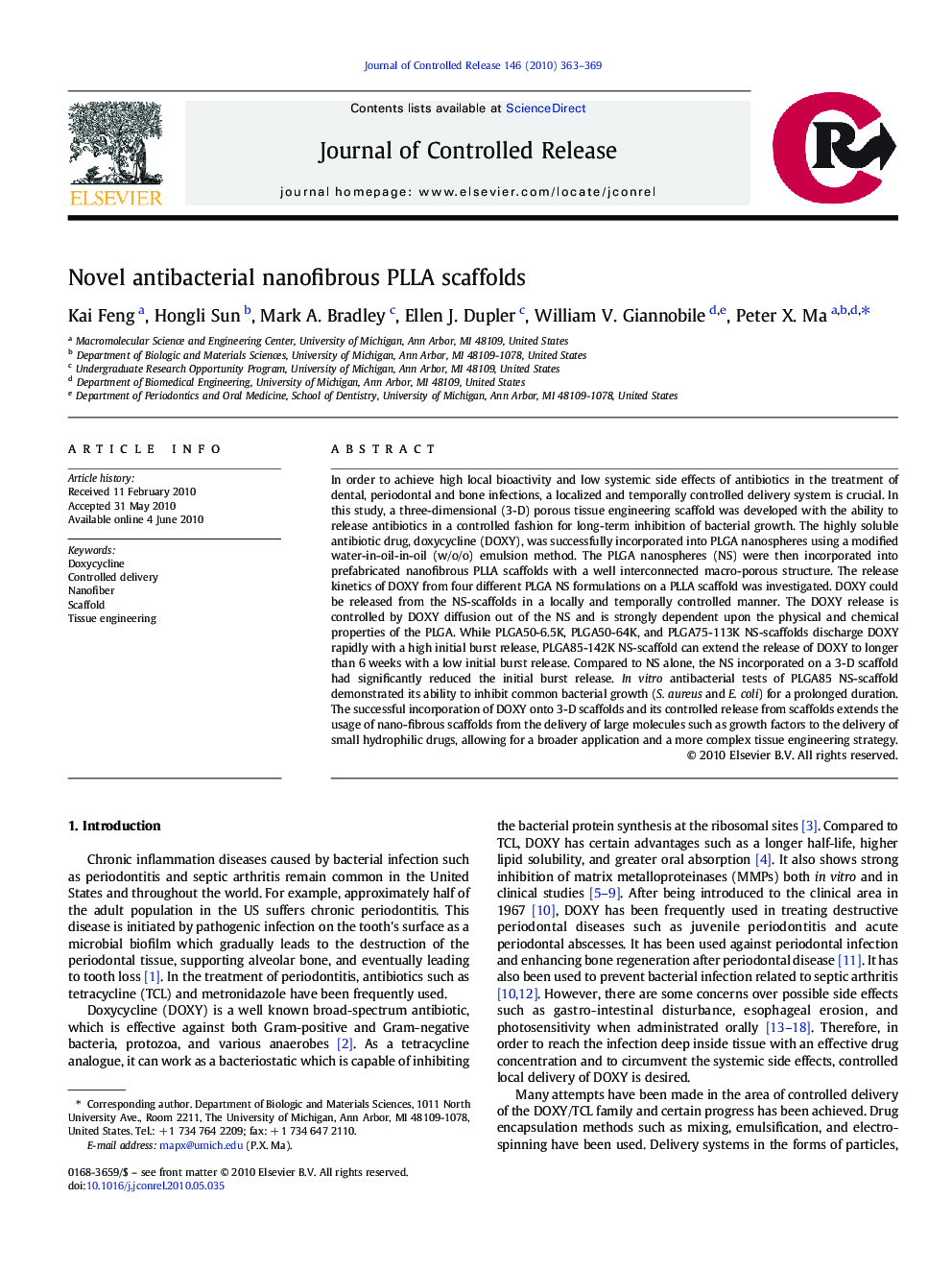| کد مقاله | کد نشریه | سال انتشار | مقاله انگلیسی | نسخه تمام متن |
|---|---|---|---|---|
| 1425713 | 986776 | 2010 | 7 صفحه PDF | دانلود رایگان |

In order to achieve high local bioactivity and low systemic side effects of antibiotics in the treatment of dental, periodontal and bone infections, a localized and temporally controlled delivery system is crucial. In this study, a three-dimensional (3-D) porous tissue engineering scaffold was developed with the ability to release antibiotics in a controlled fashion for long-term inhibition of bacterial growth. The highly soluble antibiotic drug, doxycycline (DOXY), was successfully incorporated into PLGA nanospheres using a modified water-in-oil-in-oil (w/o/o) emulsion method. The PLGA nanospheres (NS) were then incorporated into prefabricated nanofibrous PLLA scaffolds with a well interconnected macro-porous structure. The release kinetics of DOXY from four different PLGA NS formulations on a PLLA scaffold was investigated. DOXY could be released from the NS-scaffolds in a locally and temporally controlled manner. The DOXY release is controlled by DOXY diffusion out of the NS and is strongly dependent upon the physical and chemical properties of the PLGA. While PLGA50-6.5K, PLGA50-64K, and PLGA75-113K NS-scaffolds discharge DOXY rapidly with a high initial burst release, PLGA85-142K NS-scaffold can extend the release of DOXY to longer than 6 weeks with a low initial burst release. Compared to NS alone, the NS incorporated on a 3-D scaffold had significantly reduced the initial burst release. In vitro antibacterial tests of PLGA85 NS-scaffold demonstrated its ability to inhibit common bacterial growth (S. aureus and E. coli) for a prolonged duration. The successful incorporation of DOXY onto 3-D scaffolds and its controlled release from scaffolds extends the usage of nano-fibrous scaffolds from the delivery of large molecules such as growth factors to the delivery of small hydrophilic drugs, allowing for a broader application and a more complex tissue engineering strategy.
A three-dimensional (3-D) porous nano-fibrous tissue scaffold was developed with the ability to release antibiotics (doxycycline) in a controlled fashion for long-term inhibition of bacterial growth.Figure optionsDownload as PowerPoint slide
Journal: Journal of Controlled Release - Volume 146, Issue 3, 15 September 2010, Pages 363–369